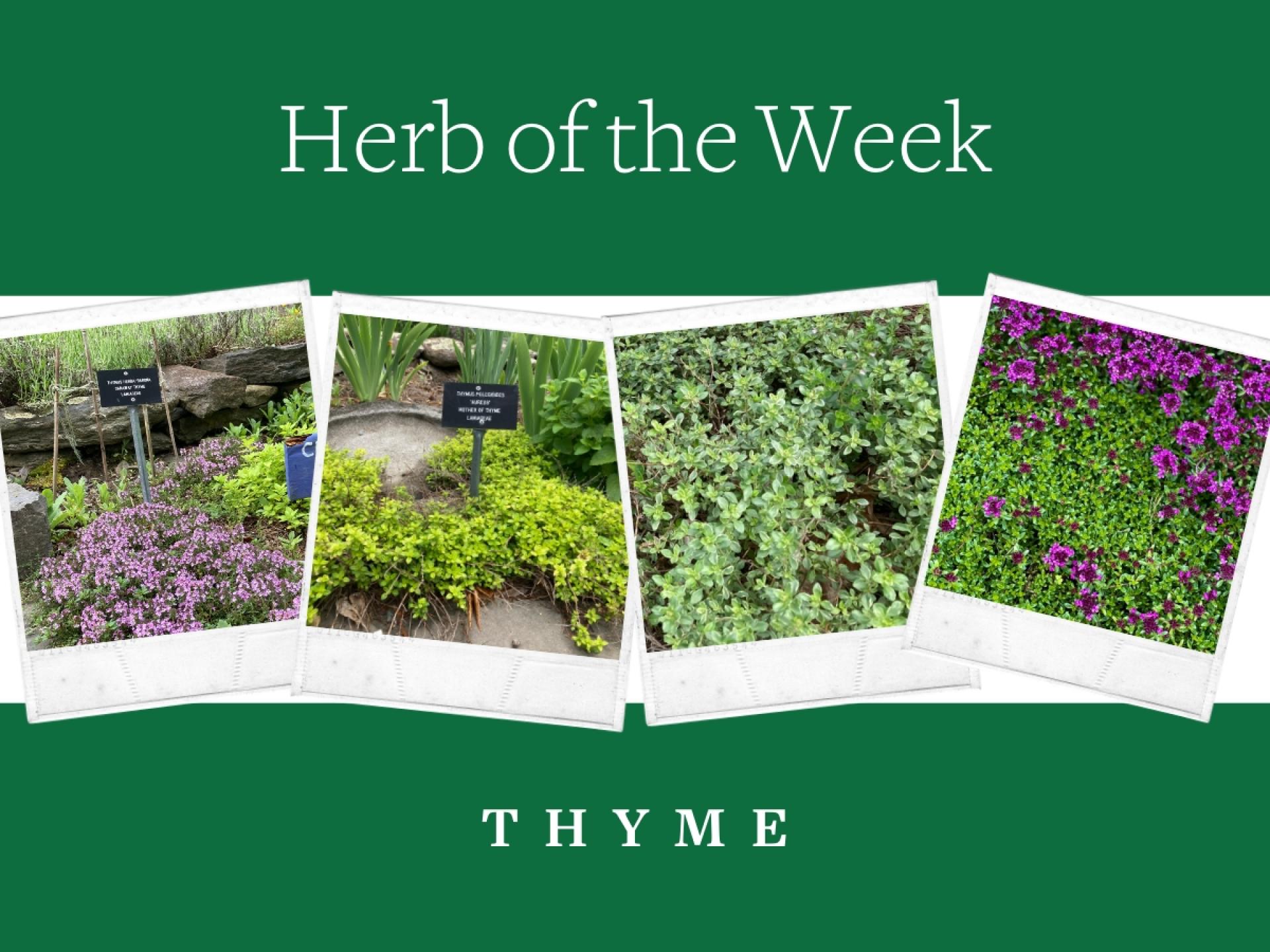You are here
Herb of the Week: Thyme
Herb of the Week: Thyme
From left, caraway thyme, mother of thyme, common thyme, and red thyme.
By Barbara Smith
“Thyme is very nearly the perfect useful herb,” commented Elizabeth Leonard, Display Herb Garden volunteer coordinator. “It enhances and complements so many foods, and it has a long history of mostly medicinal uses.”
Thymus is a genus of aromatic herbs in the Lamiaceae (mint) family. As Maggie Stuckey wrote in “The Complete Herb Book”, “if you’re looking at a plant that grows in a small, low mound and has teeny-tiny leaves, ninety-nine times out of one hundred it is a thyme. There are two general kinds of thyme – upright and creeping – and several dozen varieties but all have those tiny leaves in common.” All thymes prefer well drained soil in full sun.
While there are hundreds of thyme species, the two most frequently grown species are common thyme (Thymus vulgaris)(also called garden thyme) and mother-of-thyme, which is a creeping thyme (T. serphyllum). Roughly, common thyme and its varieties are somewhat upright; creeping thyme and its varieties are prostrate.
In the garden, some thymes are used as accent plants near the front of a border, or for carpeting, as in a rock garden. One popular plant combination is lavender and thyme. “There could hardly be two more compatible plants, satisfying in color of bloom and foliage, pleasing in fragrance and complementary in habit of growth.” (E.B. Gambee, Handbook on Herbs and their Ornamental Uses.)
Thyme flower colors range from palest pink through deep purple, and the foliage varies from dark green, silver, or variegated yellow. Thyme is a typical ingredient in potpourris. Common thyme is the most often grown and used in cooking. Its flavor enhances soups and sauces, beef, poultry and fish. It goes well with mushrooms, vegetables, grains and beans, and it makes a flavorful herb butter. Some thyme, for example, lemon thyme and caraway thyme (pictured) each impart the flavor notes their name indicates.
Harvesting and preserving
Thyme is easily dried over screens or by hanging. Store whole thyme leaves in jars out of direct sunlight.
Thyme oil has antibacterial and antifungal properties. Gardeners of old likely dabbed some white vinegar in which thyme leaves had been soaked onto their arms to help ease the itch of insect bites or to repel insects.
Update from the Production Garden and Kitchen Volunteers
The Herb Associates have been busy harvesting herbs from the production garden and preparing quantities of Piquant Herb Sauce; Oil-Free Tarragon Vinaigrette; Mint Simple Syrup, and Apple Sage Jelly, all available at the BBG Gift Shop. Quantities of thyme leaves and lemon balm leaves have been set to dry on screens for future use.
The Berkshire Botanical Garden’s Herb Associates began in 1957 and have been making and selling products for the benefit of BBG ever since. At BBG, the Herb Associates oversee a display garden and production garden, both located near the Center House. Members/volunteers meet every Tuesday morning during the late spring through mid-autumn each year, coinciding when the gardens themselves are open to the public. Members plant, weed and tend the gardens, as well as harvest and process the variety of herbs.
Help Our Garden Grow!
Your donation helps us to educate and inspire visitors of all ages on the art and science of gardening and the preservation of our environment.
All donations are 100 percent tax deductible.



